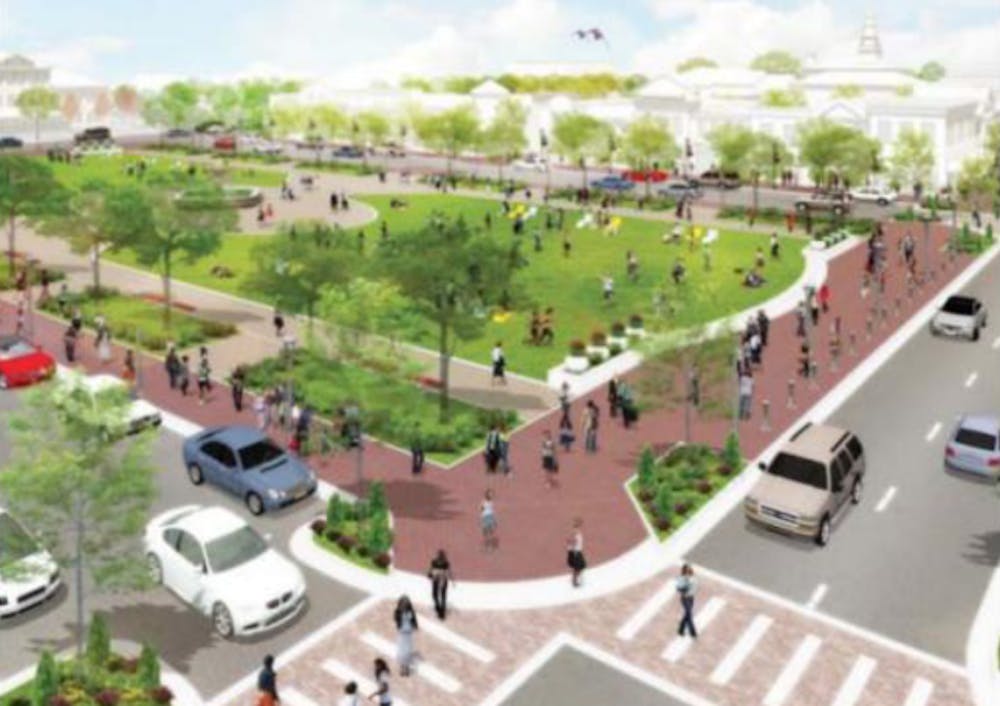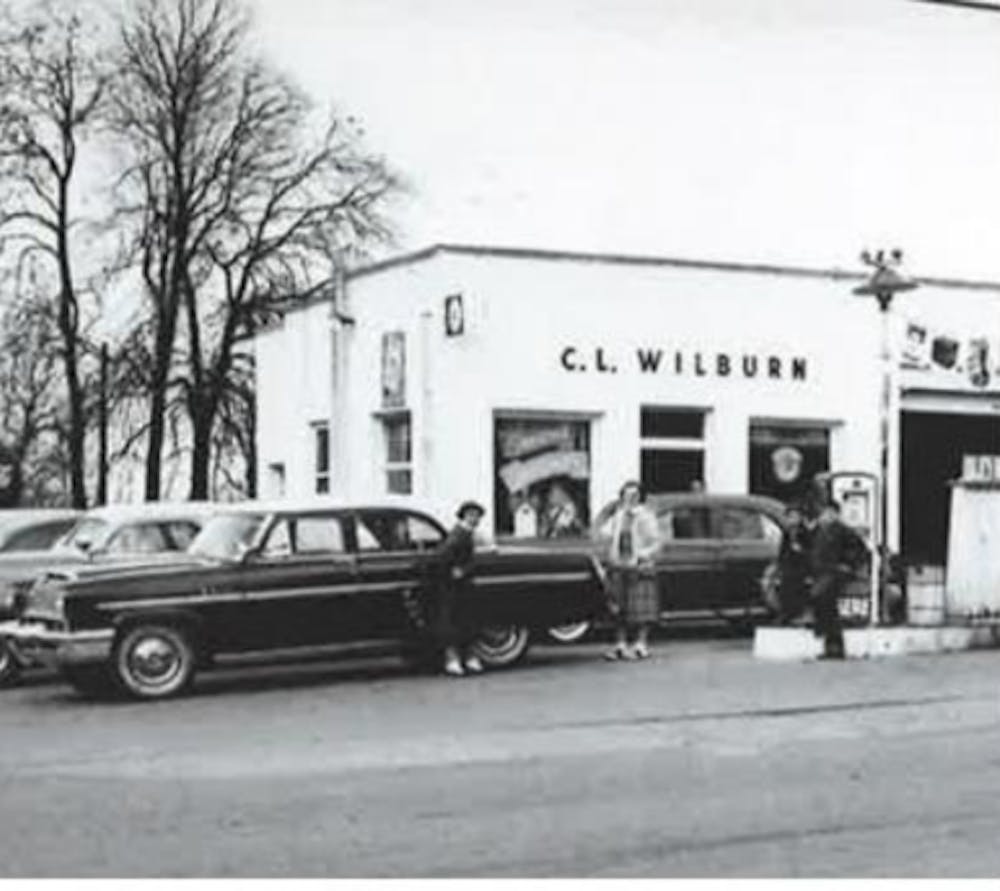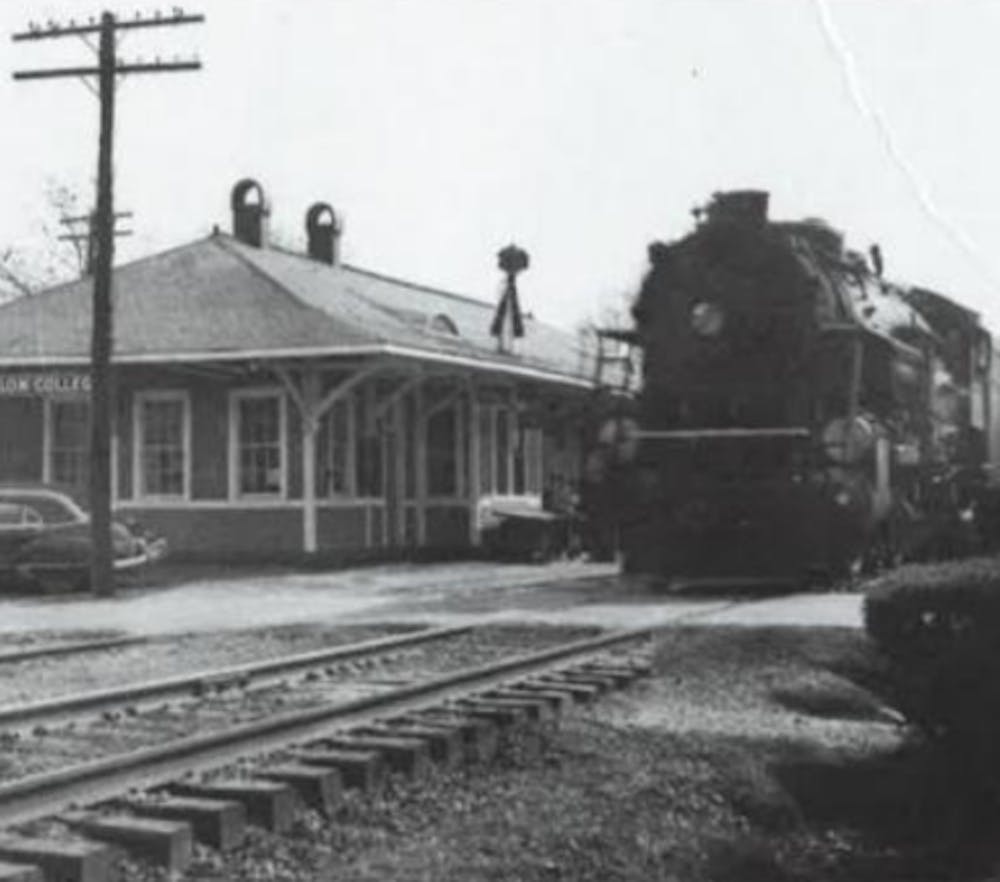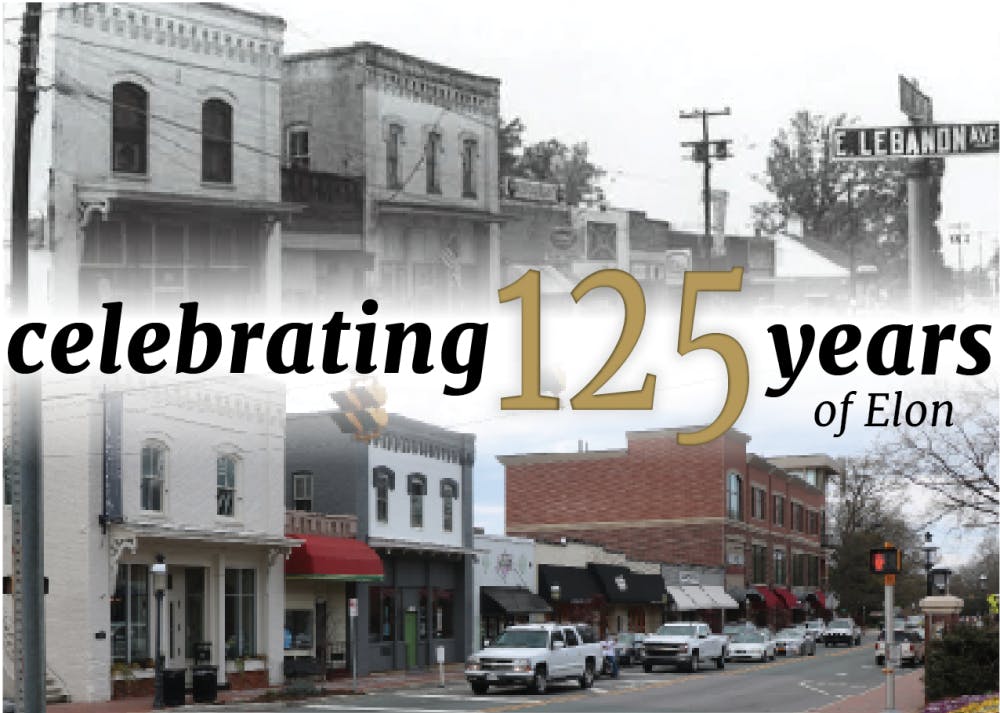Today, around 10,000 people live in the town of Elon though it is only 5 square miles. About 70 percent of the town is comprised of students. The population of Elon is growing by 290 people each year, according to the town.
Historically, the town of Elon’s success is a result of the university. And while Founder’s Day is a time to celebrate the history of Elon, the town is also celebrating its progress in moving forward with future changes.
Downtown Elon — North Williamson Avenue — is one part of the town where many residents are working to preserve Elon’s history, and 125 years later, it is still the center of thriving small businesses.
To keep up with the speed of the university’s growth, downtown Elon is promoted by the Downtown Development Committee.

There is a battle between the desire to keep the town of Elon attached to its history while also keeping up with the surrounding developments in the area.
According to the town of Elon’s Land Development Ordinance (LDO), buildings taller than three stories need a special use permit to build, which restirct many large buildings.
LDO states Elon’s vision for the future, saying it wanted to “continue to enjoy its small-town character and charm.”
The town of Elon is now in the process of working with Nealon Planning PLLC, a community planning consulting firm, to create a master plan, Envision 2040, for the next 22 years. Where the town of Elon can grow, who the town attracts and the success of local business is dependent on Elon University’s future expansion.
The major roads in the town of Elon — Williamson Avenue, Haggard Avenue and North O’Kelley Avenue — are all almost landlocked by tax-exempt, university-owned land, complicating and pushing future developments in the town of Elon north.
In a public forum discussing Envision 2040, the firm suggested that Elon’s future would be focused on some rural developments because of all the privately-owned and tax-exempt land.
“Long-term physical stability is really important when you live in a community where a lot of the land is tax-exempt,” said Meg Nealon, lead community planner.

Emily Sharpe, town of Elon Alderwoman and co-chair of the 125th Anniversary Celebration, said she is excited for the change that can be made to enhance Elon’s character.
Sharpe and much of the community believe it is necessary to support Elon students and maintain the relationship the town has with the university.
“The university is such an important part of our town,” Sharpe said. “As a town, we need to keep up with it.”
Nealon Planning projected an increase of an additional 9,000 more people in the town. The firm assessed Elon will have to continue to improve the downtown, while also increasing and diversifying its housing.
The town is also looking to try and keep more people in to stay in the community. Out of the 10,000 residents of Elon, only 199 both live and work in the town. The town will be working to try and change this through improved housing.
Sean McMahon, assistant professor of entrepreneurship at Elon University, will be moving from Burlington to the town of Elon in a few months.
“Elon [University] is fantastic. But you’re going to live in Carrboro or Chapel Hill or Greensboro. And I don’t think it would be terribly difficult to change that scenario,” McMahon said in a public forum.
McMahon suggested making the neighborhoods more connected to the downtown and the highways. He described this as building them “smart.”
Not everyone in the community is happy with the new plan, “Envision 2040.” Joseph Libera, a physical therapist located on South Williamson Avenue, said he is disappointed with the way the consulting firm neglected the university in its plans. During Nealon Planning’s community presentation, Elon University was not mentioned once.
“Can you even imagine a 20-year planning horizon in this town without using the words ‘Elon University?’” Libera said in response to Nealon Planning’s presentation.

But Elon’s Founder’s Day is a time for the town and the university to come together, despite the changes.
“I want the people who live in Elon and those who come out to the event building bridges in the people of Elon,” Sharpe said.
The town’s Founder’s Day celebration will take place April 7 on North Williamson Avenue. Forty vendors will line the streets of downtown Elon, and the there will be children’s games held on the lawn.
The university is a large contributor to the event, donating $5,000. Student performers from Limelight Records, the university’s student-ran record label, will also be performing at the event for free.
Through the new developments, the town is working to keep its town walkable while also trying to grow and to draw in as many new people as possible.
“People love that Elon has that small-town feel. We are certainly going to try to continue that,” Sharpe said. “When you drive to Elon, you feel like it’s a small town you would want to grow up in. The ability to walk to the downtown and walk to downtown to eat and shop, that’s what people are looking for.”


